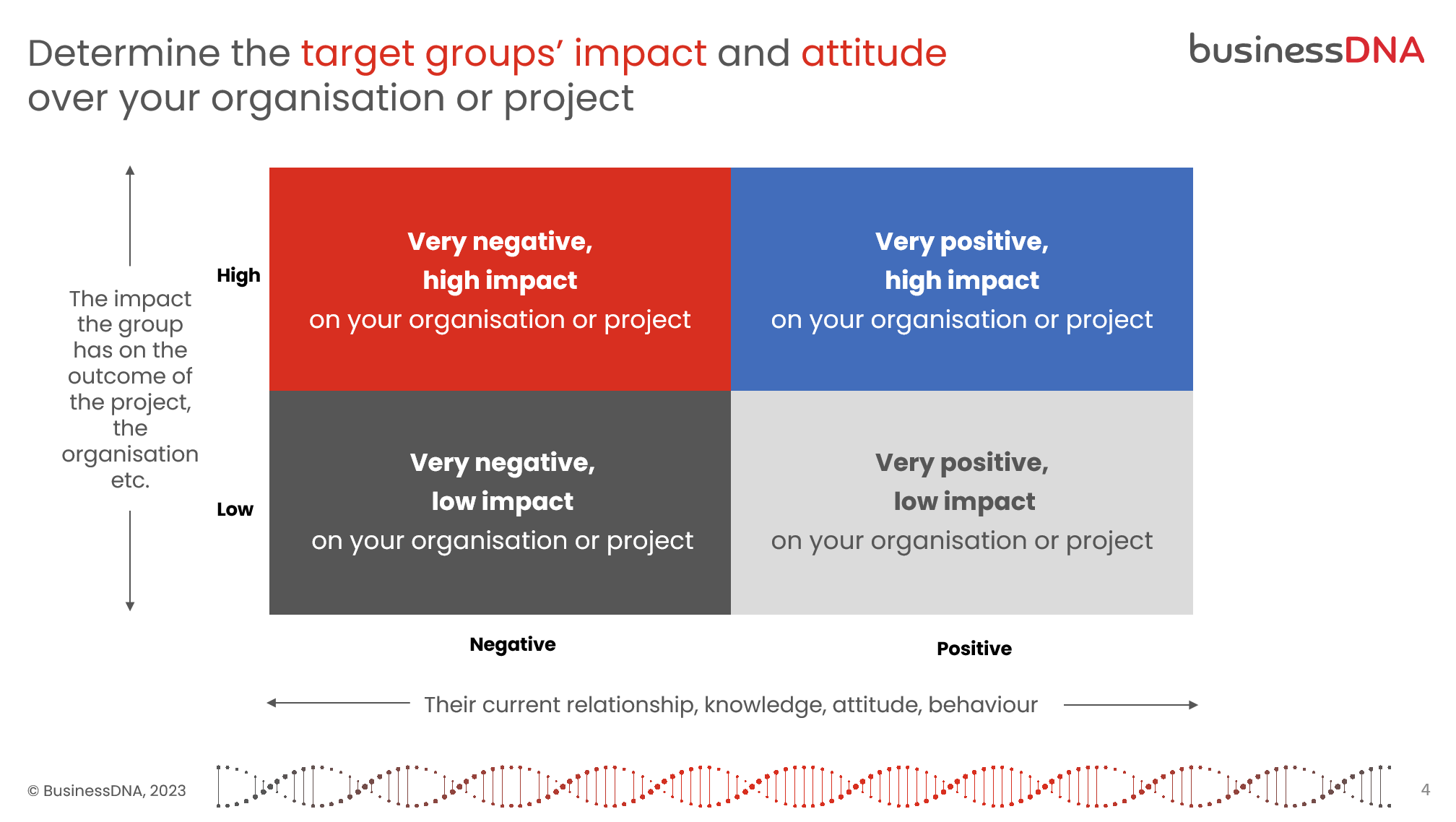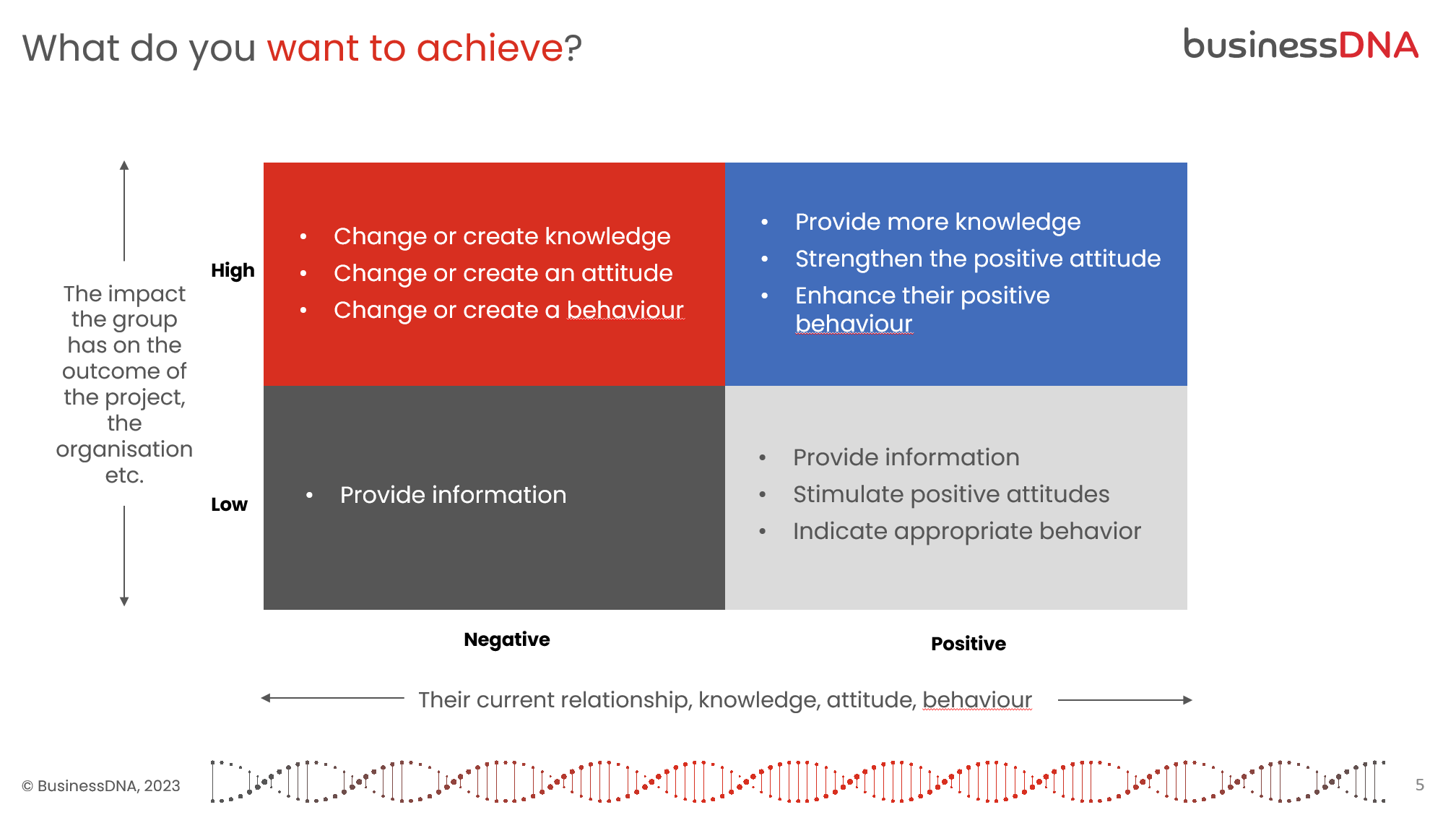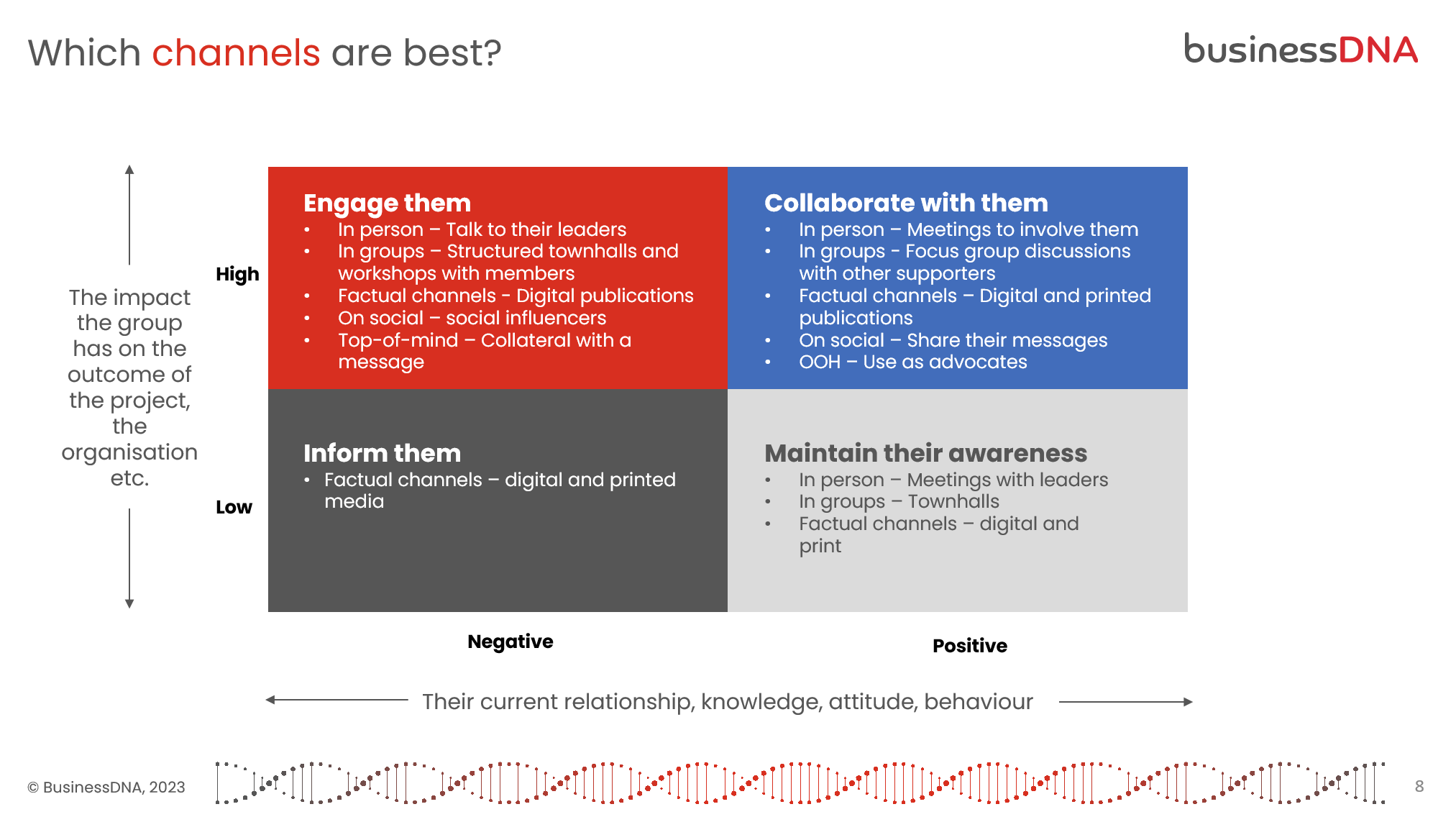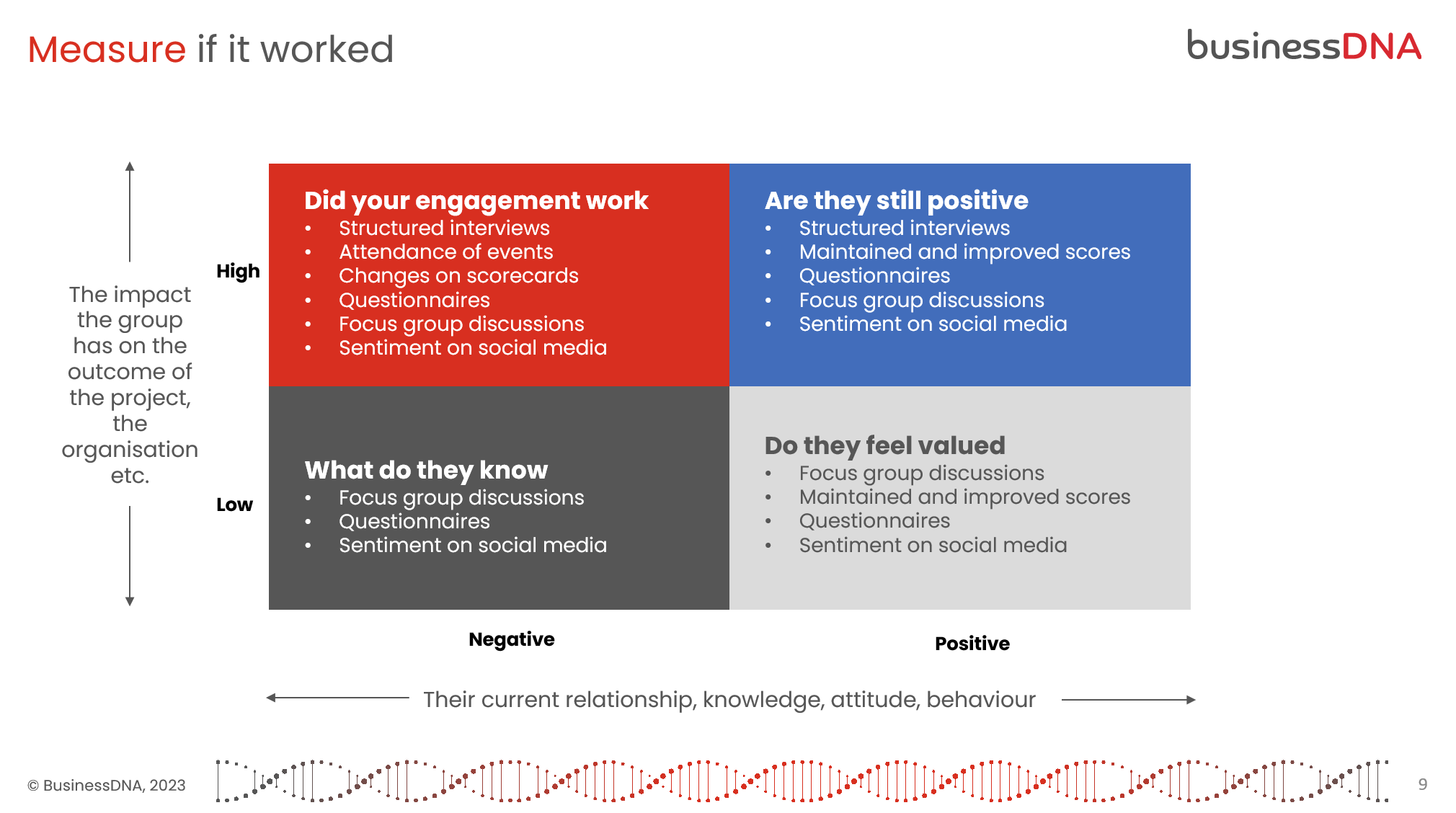Editor’s note: Earlier this year, the IABC Professional Development & Content Committee spotted a conversation getting some buzz on The Hub. When a user asked for an internal communications channel chart — what to use and when — IABC Fellow Amanda Hamilton-Attwell came to the rescue with a stakeholder engagement map.
What follows is an explanation from Amanda on how to use the map. Start by downloading the PowerPoint slide deck below, then follow along with the video and written tutorial.
Download the Free Resource
Watch: Selecting the Most Effective Communication Channel for Your Audience
Read: A Brief Tutorial on Using the Mendelow Matrix
Before you can select the best communication channel to reach your audience, it’s important to take note of the skills or “super powers” a communication professional has, and what we can achieve with them.
As communication professionals, we:
- Know how to structure messages for impact
- Know how to package content for different communication channels
The three things we can change or create with communication are:
- Knowledge
- Attitudes
- Behaviors
We amplify these super powers when we select the most appropriate channel for the message.
The Mendelow Matrix
The Mendelow Matrix offers a good starting point for selecting a channel, primarily because the elements to consider remain the same, even though communication channels change constantly.
The essence of the Matrix is the impact a target group has on the organization or project (this can be high or low) and the current relationship or knowledge, attitude and behavior regarding the project (this can be negative or positive).

Plotting Your Target Groups on the Matrix
The first step in selecting a channel is to plot your target groups on the Matrix in terms of these two elements: impact and current relationship. For example, trade unions can have a significant impact on an organisation (high), and the relationship might be negative. They will be positioned in the top left quadrant.
On the other hand, there can be shareholders who have a high impact and feel positively about the organisation. They will be positioned in the top right quadrant.
Employees' families will not have a significant impact, and they can be positive. They will go into the bottom righthand quadrant.
Lastly, a community group that is negative but has little impact goes into the bottom left quadrant.

What Are Your Objectives?
Determine what you want to achieve with your messages, using the quadrant you put the target group in. State these as SMART goals using three objectives as point of departure.
Try not to have more than three objectives, and formulate objectives relevant for all groups in a quadrant. You can have specific objectives for a particular group when you have specific campaigns, but avoid formulating too many.

Getting to Know Your Target Group
Now that you know what you want to achieve, go back to the target group and determine their communication preferences and characteristics. You’ll need this knowledge when selecting your channel. Note that the more important the target group, the more you need to know about them.

Characteristics of the Channels
Each audience will have different needs, which will ultimately inform the best type of channel to use. For example:
- If the impact is high, but the group is negative, you’ll need channels that allow you to engage with them.
- When their impact is high and they are positive, you’ll need collaborative media to enable them to amplify your message.
- If they have little impact but are negative, they are still a target group. Keep them informed and try to change their views.
- When they are positive but have little impact, consult them to make them feel recognised.

Selecting the Best Possible Channel
You are now ready to select your channel. Note that the different channels are grouped according to:
- In-person
- In group
- Factual channels
- On social
- Top of mind
- Out of home
Look at the channels you have access to, then determine which one and which combination will work best. Some channels are suggested in the sample below, but you’ll know what works best in your environment and what is available to you. Doing this will focus your effort and optimize your resources.

Last But Not Least: Measure Your Impact
Determine if the channel you selected and the message you crafted had the required impact. Use different measurement methods for other quadrants; should you need to allocate resources for the measurement, this will also serve as a guideline.
When you interpret the results, you will also use this Matrix to weight the results and allocate your resources.

I hope this will help you to make an effective and efficient channel choice and enable you to use your super powers to the fullest.

Amanda Hamilton-Attwell, ABC, CPRP, IABC FellowDr. Amanda Hamilton-Attwell is the founder and executive director of BusinessDNA. For more than two decades BusinessDNA has offered specialized business communication services to local and global companies. Hamilton-Attwell holds a PhD in communication science from the University of South Africa, she's an Accredited Business Communicator and Fellow of the International Association for Business Communicators (IABC). With over three decades of experience, she's influenced the communication profession as a lecturer, researcher, consultant and strategic advisor. Her business-aligned strategic communication interventions have benefitted numerous local and global companies. She chaired the IABC Africa Region, was an IABC Research Foundation Trustee and co-chaired the IABC Career Road Map team. In 2014 she received the IABC Chairman's Award and in 2021 the Rae Hamblin Award for her role in the workgroup that developed the Career Assessment Tool for Communication Professionals. As an adept evaluator, Hamilton-Attwell has served on numerous local and global Blue Ribbon Panels and a PRISM Award judge. She developed the communication awards program for tertiary institutions to a level where it is now a feeding ground for awards entries for several other local and global awards.